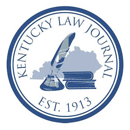UKnowledge > J. David Rosenberg College of Law > Law Journals > Kentucky Law Journal > Vol. 103 > Iss. 3 (2014-2015)
Abstract
Contemporary discussions concerning surveillance focus predominantly on government activity. These discussions are important for a variety of reasons, but they generally ignore a critical aspect of the surveillance--harm calculus--the source from which government entities derive the information they use. The source of surveillance data is the information "gathering" activity itself which is where harms like "chilling" of speech and behavior begin.
Unlike the days where satellite imaging, communications intercepts, and other forms of information gathering were limited to advanced law enforcement, military, and intelligence activities, private corporations now play a dominant role in the collection of information about individuals' activities. Private entities operate social networks, instant messaging, e-mail, and other information systems, which now are the predominant means through which people communicate. Private entities likewise control the physical and wireless networks over which these systems communicate.
This short Article separates surveillance into information "gathering" activities and information "usage" activities and examines the distinct, standalone privacy-harming potential of each. It then argues that while modern government surveillance focuses primarily on usage activities, private corporations engage in information gathering activities and separately use that information in their profitable business activity. Additionally, the fact that they possess such information makes private corporations a logical "feed" for information used in government surveillance.
Profit-making efforts, unlike public functions, must advance the interests of shareholder return, and can only consider privacy or similar concerns to the extent that those concerns are subject to regulation or can be justified as market-competitive. This Article argues that since neither exception is common, the primary incentives of private corporations are to gather and use as much information as possible, thereby increasing the probability of "chilling effects."
Failure to examine the role of private corporations in surveillance scholarship thus creates both an incomplete discussion of the harms of government surveillance and fails to include an essential element of harm. This Article briefly examines notable examples of contemporary surveillance and argues for the inclusion ofprivate actors in surveillance-harm analysis.
Recommended Citation
Thaw, David
(2015)
"Surveillance at the Source,"
Kentucky Law Journal: Vol. 103:
Iss.
3, Article 6.
Available at:
https://uknowledge.uky.edu/klj/vol103/iss3/6
